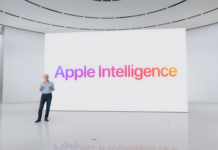ZenML is emerging as the rising star in the AI industry, aiming to seamlessly bind all the open-source AI tools out there. What’s it all about? This open-source framework is designed to craft pipelines. These pipelines are then utilized by data scientists, machine-learning mavens, and platform engineers to design innovative AI models.
Here’s the twist: ZenML encourages businesses to construct their private AI models. Now, it’s not about crafting something as grandiose as the top AI models out there. It’s about creating compact models tailored to fit specific needs. The plus? Reducing dependency on dominant API providers.
Louis Coppey from Point Nine, a venture capital firm, gave his take. He believes once the overwhelming craze around using dominant AI platforms wanes, ZenML will usher in a new era. Companies will start crafting their personalized tech stacks.
Let’s dive deeper into ZenML’s journey.
Earlier this calendar, ZenML successfully extended its seed round funding. This round, led by Point Nine and seconded by Crane, helped the Munich-based startup amass a whopping $6.4 million since its foundation.
Digging into the roots, ZenML was an idea conceived by two passionate techies, Adam Probst and Hamza Tahir. Their previous venture revolved around designing ML pipelines tailored for businesses in certain sectors. Adam Probst, ZenML’s CEO, shared their experience, emphasizing how they constantly needed to integrate machine learning into mainstream production.
To eliminate the repetitive tasks, they envisaged a modular system. This system was adaptable, catering to various scenarios, client requirements, and tech environments. Thus, ZenML was born.
For those fresh to the machine learning scene, ZenML offers a kickstarter. The company fondly labels this space as MLOps. Think of it as DevOps but custom-made for ML.
In Probst’s words, ZenML is the bridge connecting open-source tools. These tools focus on constructing a robust machine learning pipeline. And all this is built on the foundation of leading tech giants like AWS and Google, not to mention on-prem solutions.
ZenML thrives on the concept of pipelines. Author a pipeline, and voila! You can run it locally or deploy it using open-source powerhouses like Airflow or Kubeflow. Looking to leverage cloud facilities? EC2, Vertex Pipelines, and Sagemaker have you covered. Moreover, ZenML proudly integrates with renowned ML tools, including Hugging Face, MLflow, TensorFlow, PyTorch, and more.
Hamza Tahir, ZenML’s CTO, boasts about its versatility. ZenML merges all these resources, offering a unified experience. It’s the ultimate multi-cloud, multi-vendor solution. With connectors, observability, and auditability, ML workflows have never been smoother.
Originally, ZenML graced the tech scene on GitHub as a free tool. With over 3,000 stars on the platform, ZenML’s popularity is evident. Not one to rest on their laurels, the company recently unveiled a cloud rendition with server management. They’re also hinting at soon-to-be-launched continuous integration and deployment (CI/CD) triggers.
As of now, businesses across sectors, from e-commerce to medicine, are harnessing ZenML’s prowess. Rivian, Playtika, and Leroy Merlin are just a few names on their impressive client list.
AI’s future landscape is key to ZenML’s triumph. Currently, AI integrations are achieved majorly by querying dominant AI platforms. However, Adam Probst feels these APIs have limitations – they’re over-trained and too pricey.
Probst is bullish about AI’s trajectory. He believes while dominant models will endure, the bulk will transition towards in-house solutions. Sam Altman, a bigwig in the AI sector, echoed these sentiments. He’s confident that both specialized and broad models have pivotal roles in the evolving AI narrative.
Regulations and ethical concerns are also shaking things up. Especially in Europe, where companies might be nudged to use AI models tailored to stringent datasets and applications.
Hamza Tahir sums it up: the forthcoming years will witness seminal shifts in AI history. The value proposition? A shift towards more specialized, cost-effective, in-house models.












